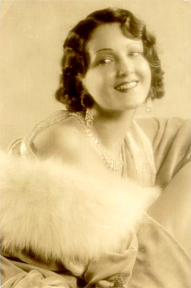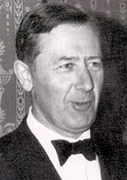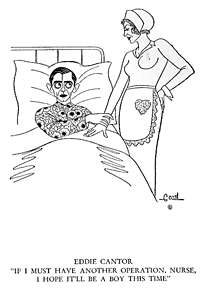Here are 10 things you should know about Sally Eilers, born 115 years ago today. Flo Ziegfeld once told Louella Parsons that Eilers was the prettiest actress in Hollywood.
Tag: F.W. Murnau
Happy Birthday, Janet Gaynor!
Janet Gaynor, born Laura Gainor 109 years today in Philadelphia, Pennsylvania, is not as well remembered today as she should be. (Yes, we old movie buffs know her and love her, but the general public has largely forgotten her.)
There were few bigger stars in 1920s and early ’30s, and her screen partnership with Charles Farrell had fans dreaming that he’d leave his wife for her.
Janet Gaynor made any number of terrific films, but our two favorites are F. W. Murnau‘s silent masterpiece, Sunrise (1927), and the first A Star Is Born (1937), directed by the great William Wellman (A Star Is Born can be viewed for free by Amazon Prime members).
A few TV appearances aside, Janet Gaynor retired in 1938, but she left an indelible mark on the motion picture industry (she won the very first Best Actress Oscar on May 16, 1929, about which she said, “Naturally, I was thrilled, but being the first year, the Academy Awards had no background or tradition, and it naturally didn’t mean what it does now. Had I known then what it would come to mean in the next few years, I’m sure I’d have been overwhelmed. At the time, I think I was more thrilled over meeting Douglas Fairbanks.”
Here’s wishing you a happy birthday, Ms. Gaynor, wherever you may be.
Hollywood Undressed, Chapter Five
THE GREAT POISON PLOT
 When Mary Duncan came along in 1928 and wanted to sign up for Sylvia’s exclusive services for a half-year, we were all against it—except Sylvia herself. A contract to massage anyone morning, noon, and night is worse than getting married. After all, a woman’s husband can get away from her some of the time. But a woman’s personal masseuse dresses her, undresses her, soothes her to sleep, spanks her awake, and (if the contract includes dietary work, as with Mary Duncan it did) watches every bite of food that goes down her throat three times a day.
When Mary Duncan came along in 1928 and wanted to sign up for Sylvia’s exclusive services for a half-year, we were all against it—except Sylvia herself. A contract to massage anyone morning, noon, and night is worse than getting married. After all, a woman’s husband can get away from her some of the time. But a woman’s personal masseuse dresses her, undresses her, soothes her to sleep, spanks her awake, and (if the contract includes dietary work, as with Mary Duncan it did) watches every bite of food that goes down her throat three times a day.In Your Hat, pt. 12

| If you took a rabbit out of those suckers’ hats They would squawk just the same: They all have two strikes on them When they are born. TEXAS GUINAN
|
“May every hat check bring you a fat check—and may no meanie neglect my Renee—who never wrecks hats each time she checks hats—Frances Williams.”
“Oh, look, I am in your book—thanks for letting me.”
“To Renee, who expects something clever from me but won’t get it.”
“To Renee, from her worst customer.”
“To a real and sweet girl, with loads of knockouts.
Tony Canzoneri,
Lightweight Champion of the World.”
“To Renee—
“Who takes what you give graciously. All life is a game of give and take. For what she takes she gives in a return a smile, a cheerful greeting and your belongings. May you go a long ways and prosper. Keep smiling Renee, it’s what we all go for.”
“To Renee—
Duchess of Sardi,
from
Baron George Jessel,
Colonel of the Bronx Grenadiers
And Vis-count of Brownsville.”
“You’ll always be Miss Shapiro to me—one of my best yarns. Sidney Skolsky
P.S. She sleeps in the raw!”
“My hat’s off to you. (Get it?) Je parle français aussi. (I hope that’s right).”
“My autograph I here inscribe,
A member of the organ tribe
Jesse Crawford,
Poet (?) of the Organ.”
“Keep your face towards the sun and the shadows will fall behind you.”
“A mon amie Renee en souvenir des Ziegfeld Follies 1931.”
“A hat girl who has more in her head than all the brains those hats cover. A little princess on a door mat—An oriental pearl in a suffocating shell—a ruby in a musty purse, but watch her.”
“To Renee. In memory of my first daughter of four kilos.”
“Because I like red-heads.”
Better late than never
 Though they’ve understandably slipped out of the spotlight, silent movies still inspire fascination and devotion among cineastes and good old-fashioned movie buffs. Turner Classic Movies devotes the midnight timeslot to silents every Sunday night, and museums and revival houses across the country still screen silent classics, often with live accompaniment by pianists and small musical combos.
Though they’ve understandably slipped out of the spotlight, silent movies still inspire fascination and devotion among cineastes and good old-fashioned movie buffs. Turner Classic Movies devotes the midnight timeslot to silents every Sunday night, and museums and revival houses across the country still screen silent classics, often with live accompaniment by pianists and small musical combos.
We’re convinced that one of the reasons Ms. Cladrite fell for us was the eight consecutive Mondays we spent laughing our heads off during a Buster Keaton festival at New York’s Film Forum. There’s nothing like seeing a great silent movie in packed house with adept accompaniment provided by a deft pianist (Steve Sterner, in this case).
 There was little in the way of film criticism in the silent era, so to a large degree it fell to later critics and film scholars to keep alive the discussion and scholarship surrounding these movies. One of the key figures in silents criticism was H.A.V. Bulleid, an English writer who was still with us until about ten months ago.
There was little in the way of film criticism in the silent era, so to a large degree it fell to later critics and film scholars to keep alive the discussion and scholarship surrounding these movies. One of the key figures in silents criticism was H.A.V. Bulleid, an English writer who was still with us until about ten months ago.
Bulleid’s key work of film criticism, Famous Library Films, never saw the light of day (or, rather, the ink of print). Comprising reviews of silent movies written in the early 1940s for Amateur Cine World, Famous Library Films was to be published in book form in 1947, but the publisher fell prey to the still-struggling postwar economy in England, and Bulleid was forced to shelve the project.
 But finally, more than sixty years later, Bulleid’s not-quite-forgotten collection is finally being made available to the public, free of charge, at SilentsAreGolden.com. Included is a previously unpublished preface written for the book’s planned 1947 edition by director Fritz Lang and a contemporary introduction provided by esteemed silent film scholar Kevin Brownlow.
But finally, more than sixty years later, Bulleid’s not-quite-forgotten collection is finally being made available to the public, free of charge, at SilentsAreGolden.com. Included is a previously unpublished preface written for the book’s planned 1947 edition by director Fritz Lang and a contemporary introduction provided by esteemed silent film scholar Kevin Brownlow.
Among the twenty-three pictures Bulleid critiques in the book are Sergei Eisenstein‘s Battleship Potemkin, the German Expressionist classic The Cabinet of Dr. Caligari, Piccadilly starring Anna May Wong, Lang’s own Metropolis (too bad Bulleid didn’t live long enough to see the recent restoration of this classic), and F. W. Murnau‘s Faust.


